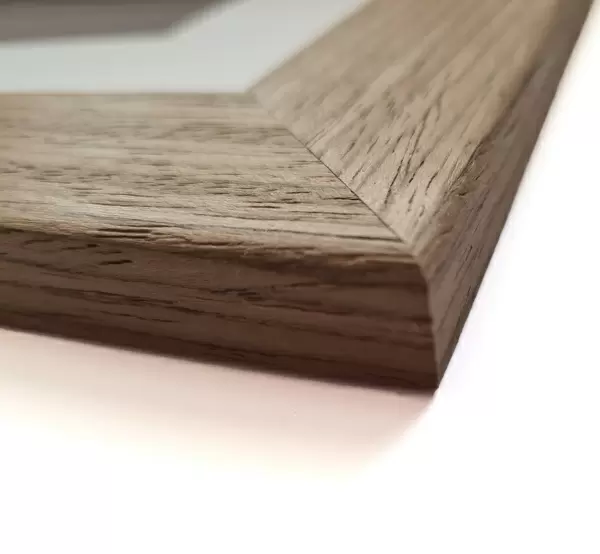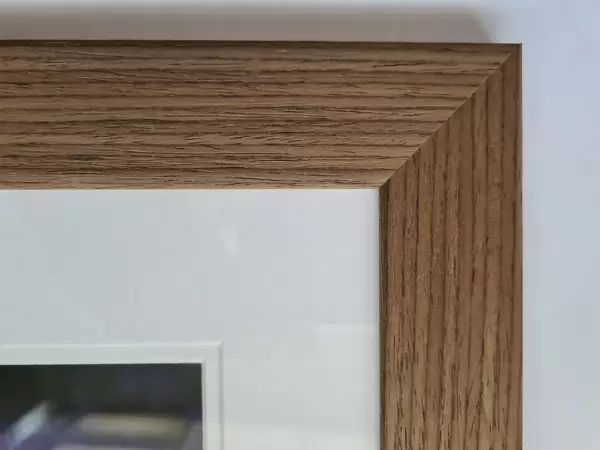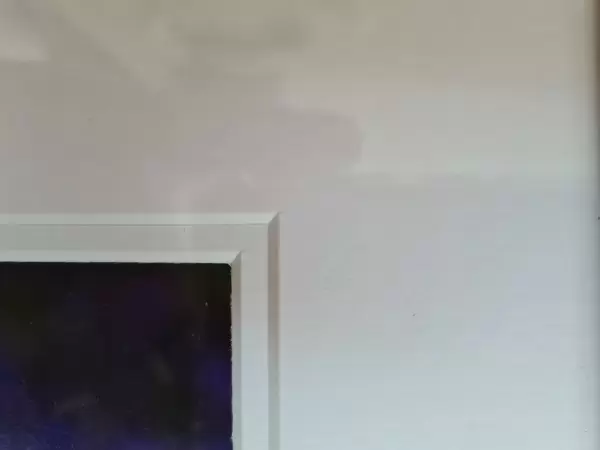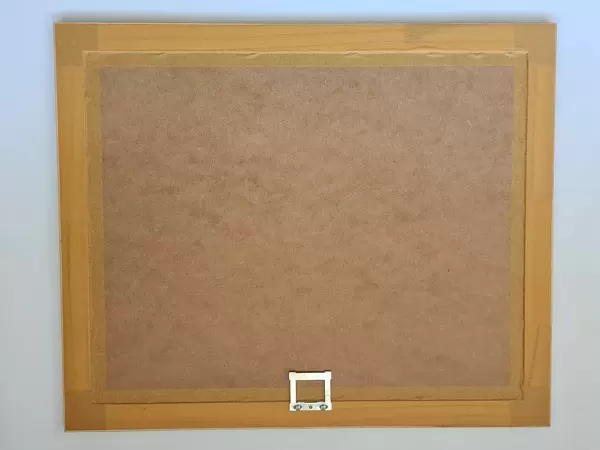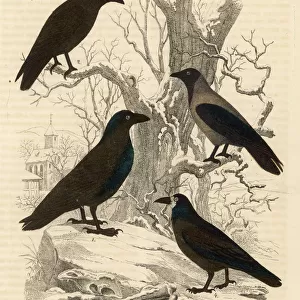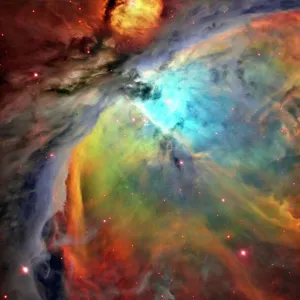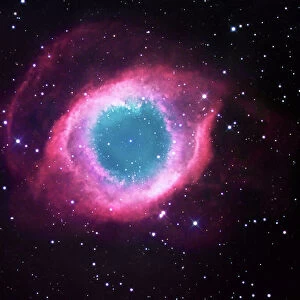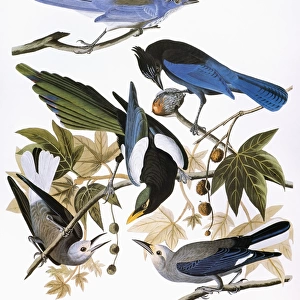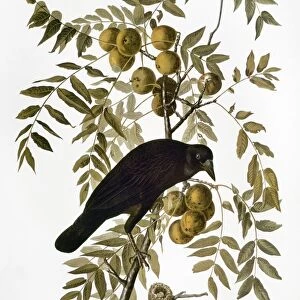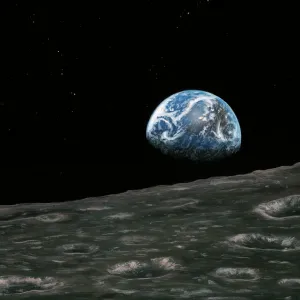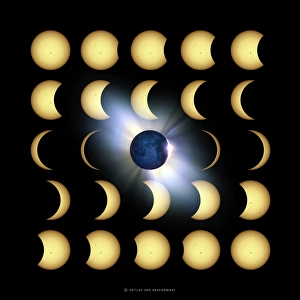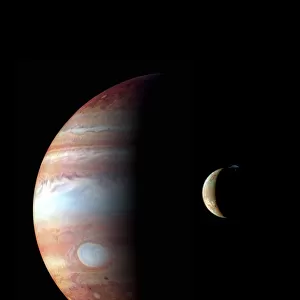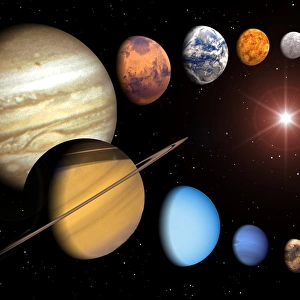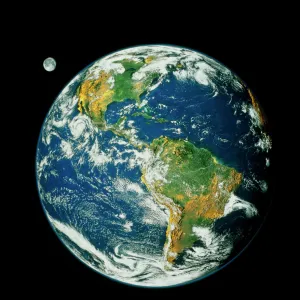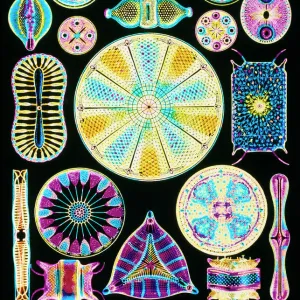Premium Framed Print > Science > Space Exploration > Planets > Pluto
Premium Framed Print : Jupiter and Io, New Horizons image
![]()

Framed Photos from Science Photo Library
Jupiter and Io, New Horizons image
Jupiter and Io. Montage of images of Jupiter (left) and its moon Io (right), obtained by the New Horizons spacecraft in February and March 2007 as it passed Jupiter on its way to Pluto. The image of Jupiter was obtained with its infrared spectrometer (LEISA). The different colours show high-altitude clouds (blue), and deeper clouds (red). The Great Red Spot (lower left) is blue and white. The Io image was obtained in approximate true colour with a long-range camera (LORRI) and a multispectral camera (MVIC). The red dot on the nightside of Io is an eruption of the Tvashtar volcano. The volcanic plume (blue) seen above the eruption is 330 kilometres high. Jupiter is the solar systems largest planet
Science Photo Library features Science and Medical images including photos and illustrations
Media ID 1694559
© NASA/JHU/APL/SCIENCE PHOTO LIBRARY
2007 Cloud Clouds Crescent Deep Erupting Eruption February From Space Great Red Spot Infra Red Jovian System Jupiter March Moon Planetary Planetary Science Plume Probe Satellite Image Solar System Space Craft Storm Volcanic Volcano Volcanology Vulcanology Crescents Imager New Horizons
17"x15" (43x38cm) Premium Frame
FSC real wood frame with double mounted 10x8 print. Double mounted with white conservation mountboard. Frame moulding comprises stained composite natural wood veneers (Finger Jointed Pine) 39mm wide by 21mm thick. Archival quality Fujifilm CA photo paper mounted onto 1mm card. Overall outside dimensions are 17x15 inches (431x381mm). Rear features Framing tape to cover staples, 50mm Hanger plate, cork bumpers. Glazed with durable thick 2mm Acrylic to provide a virtually unbreakable glass-like finish. Acrylic Glass is far safer, more flexible and much lighter than typical mineral glass. Moreover, its higher translucency makes it a perfect carrier for photo prints. Acrylic allows a little more light to penetrate the surface than conventional glass and absorbs UV rays so that the image and the picture quality doesn't suffer under direct sunlight even after many years. Easily cleaned with a damp cloth. Please note that, to prevent the paper falling through the mount window and to prevent cropping of the original artwork, the visible print may be slightly smaller to allow the paper to be securely attached to the mount without any white edging showing and to match the aspect ratio of the original artwork.
FSC Real Wood Frame and Double Mounted with White Conservation Mountboard - Professionally Made and Ready to Hang
Estimated Image Size (if not cropped) is 18.3cm x 24.4cm (7.2" x 9.6")
Estimated Product Size is 38.1cm x 43.1cm (15" x 17")
These are individually made so all sizes are approximate
Artwork printed orientated as per the preview above, with portrait (vertical) orientation to match the source image.
FEATURES IN THESE COLLECTIONS
> Posters
> Scientific Posters
> Science
> Space Exploration
> The Moon
> Science
> Space Exploration
> Planets
> Jupiter
> Science
> Space Exploration
> Planets
> Pluto
> Science
> Space Exploration
> Related Images
> Science
> Space Exploration
> Satellite Imagery
> Science
> Space Exploration
> Solar System
> Science Photo Library
> Space
EDITORS COMMENTS
This print showcases the majestic beauty of Jupiter and its moon Io, captured by the New Horizons spacecraft during its journey to Pluto in February and March 2007. The image on the left reveals Jupiter's awe-inspiring features through its infrared spectrometer (LEISA), displaying a mesmerizing array of colors. The high-altitude clouds appear in striking blue hues, while deeper clouds are depicted in vibrant red tones. Notably, the iconic Great Red Spot can be seen towards the lower left, adorned with shades of blue and white. On the right side of this montage lies Io, bathed in approximate true color thanks to a long-range camera (LORRI) and multispectral camera (MVIC). A crimson dot on Io's nightside signifies an eruption from the Tvashtar volcano, emanating a volcanic plume that soars an astonishing 330 kilometers into space. Jupiter itself stands as our solar system's largest planet, exuding an undeniable sense of grandeur. This extraordinary snapshot offers us a glimpse into both planetary science and volcanology as we marvel at these celestial wonders. It serves as a testament to human exploration and scientific progress in understanding our vast universe. Captured with precision by Science Photo Library's expertise, this photograph encapsulates the essence of deep space exploration while igniting our curiosity about what lies beyond our own world.
MADE IN THE UK
Safe Shipping with 30 Day Money Back Guarantee
FREE PERSONALISATION*
We are proud to offer a range of customisation features including Personalised Captions, Color Filters and Picture Zoom Tools
SECURE PAYMENTS
We happily accept a wide range of payment options so you can pay for the things you need in the way that is most convenient for you
* Options may vary by product and licensing agreement. Zoomed Pictures can be adjusted in the Basket.



